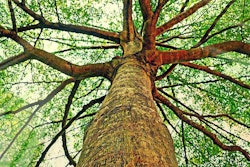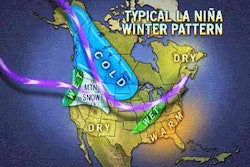 Bird feeders are one of the most common attractants of black bears.
Bird feeders are one of the most common attractants of black bears.Photo: Pixabay
As a backyard is still a part of nature, it should come as no surprise when animals come to call in search of food or shelter.
Most of these animals are cute, cuddly, and harmless to humans, but they are not so gentle on the landscaping. For tips on preventing these types of animals, such as deer and rabbits, click here.
Then there are the predators – creatures that can pose a threat to your clients, their children, and pets.
Depending on the area, wildlife such as bears, cougars, and coyotes can appear in a homeowner’s yard. Here are some tips you may want to share with clients on how to discourage these potentially dangerous visitors.
Bears
Bears are omnivores and tend to avoid humans, but when their natural food sources are low they will seek out other options. Bird feeders should be taken down from mid-March to mid-November as this is when bears are active and birds can take care of themselves during the summer.
If your clients have a compost pile, remind them not to place meat or sweet food scraps in an outdoor pile. Advise against allowing garbage to pile up and encourage them to clean and store their grills in a secure location when not in use.
Urge customers not to allow fruits and vegetables to rot on the ground. For edible gardens, Kevin Sanders, a Yellowstone Park guide, suggests placing portable solar-powered electric fences around them.
Remind homeowners to never try to attract a bear to their yard. As the common phrase goes, “a fed bear is a dead bear.” Those that become accustomed to human food are relocated, but they generally return to the food source and often have to be put down.
Cougars
As cougars’ habitat diminishes, their willingness to follow prey wherever increases. One of the best ways to avoid attracting a cougar is to make sure your landscape doesn’t attract prey such as deer.
Cougars are active from dusk until dawn so pets and children should not be left outside during this time. Add landscape lighting along paths and motion sensors in darker areas. Make sure vegetation is well-pruned so the predators lack the dense underbrush they need to hunt.
According to the Washington Department of Fish and Wildlife, a chain-link or heavy woven wire fence that is 10 feet tall with 3-foot extensions installed at a 65-degree angle on each post may keep cougars out of an enclosed area.
“Even though human injuries from a bear or a mountain lion are rare, they do happen and the probability increases with proximity to them,” Valerie Matheson, an urban wildlife conservation coordinator for Boulder, Colorado, told the National Wildlife Federation.
Snakes
 Copperhead snakes are known for biting more people in the U.S. than any other snake.
Copperhead snakes are known for biting more people in the U.S. than any other snake.Photo: Wikipedia
Not all snakes are venomous, but this doesn’t mean every homeowner wants to welcome the reptiles into his or her yard. Snakes are beneficial if there is a rodent problem, but if a client doesn’t want the snakes around, removing their food source – mice – is one option.
Denying snakes of hideouts is another good route and this means keeping the lawn nice and tidy by mowing tall grass and pruning shrubs so there is no low-hanging growth. Piles of rocks, firewood, and leaves should be cleared away as well.
As with all animals, fencing is the best bet to keep snakes out. According to the Minnesota Department of Natural Resources, a snake fence can be made by modifying any normal fence with 24-inch-high hardware cloth with ¼-inch weave. Bury the bottom half of the cloth 2 to 4 inches in the soil. It is important that it goes all the way around as snakes tend to travel around rather than over.
Coyotes
Like bears, coyotes can feed on just about anything, so garbage should be stored indoors until the morning of pickup. Other sources of food such as fallen fruit and pet food should be removed, along with water.
Landscape lighting is another way to deter coyotes. They dislike flashing lights and loud noises. Motion-sensor lights can prevent them from prowling around. Other options include odor deterrents and electronic systems that emit sounds to scare away coyotes.
Fences need to be at least 6 feet tall to discourage coyotes, and it’s important that a roller be placed on the top so they cannot get a proper foothold. An apron also needs to be buried in order to prevent coyotes from burrowing under the fence.
Alligators
This may seem like an unlikely predator in many areas of the country, but if your client lives near a natural body of water in the South, stranger things have happened.
Water features such as a lake or small pond are obviously attractive to alligators, and if you have turtles, fish, or ducks that live around the pond, you’ve pretty much opened a bed and breakfast for the ancient reptiles. Vegetation around water sources also provides hiding places for them.
The only effective deterrent is a sturdy fence that is more than 4.5 feet tall. Whether they look like they can or not, young alligators are quite agile and adults have claws and powerful tails to push them up. If feasible, privacy fencing is best; otherwise, a gator might spot temptations such as a small dog – a snack worth the climbing effort.









